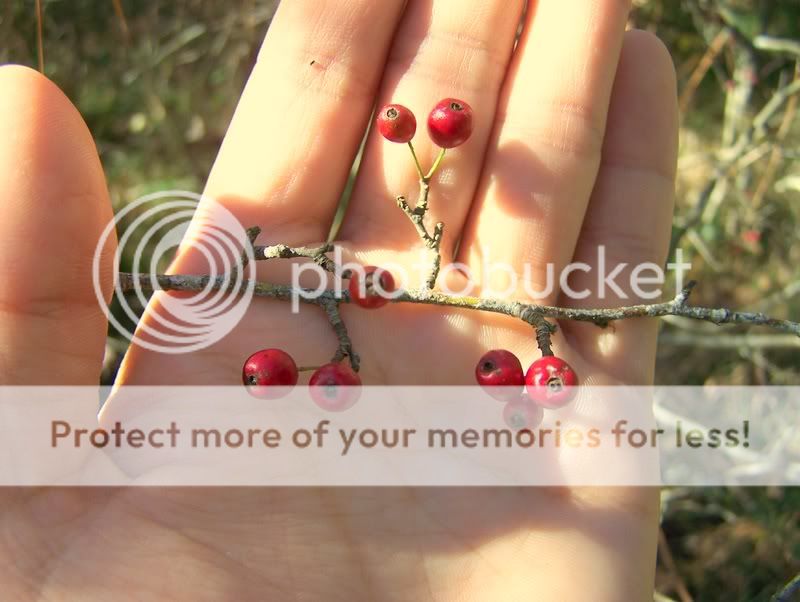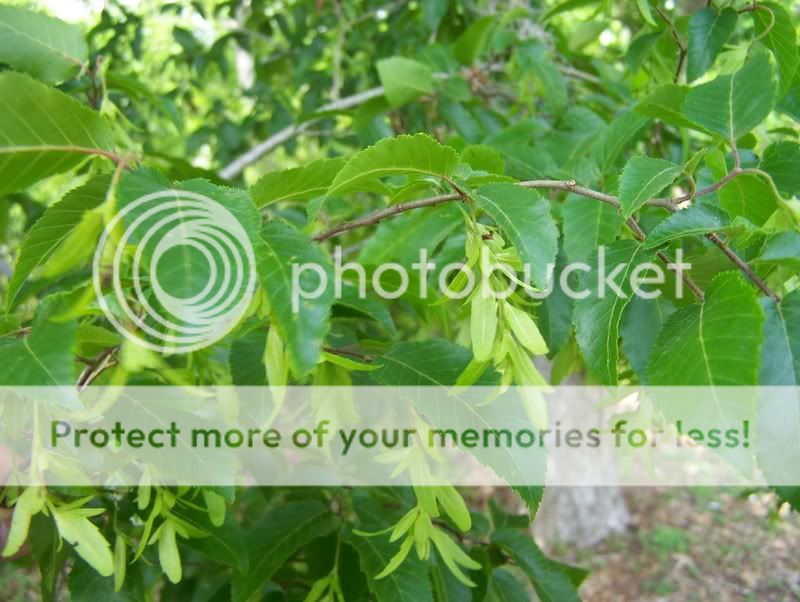This large shrub from the honeysuckle family is known as arrow-wood. It's one of a couple species of Viburnum that grow in this area. Arrow-wood grows all over the eastern half of the country from Minnesota to Texas. The leaves are around 3 inches long and have attractive coarse dentation along the edge (hence the species name dentatum). Like other viburnums, they produce flat-topped clusters of small white flowers followed by tiny blue-black fruits. Viburnums may be confused with dogwoods (Cornus sp.) because their flower and leaf arrangements are so similar.
Tuesday, March 31, 2009
Viburnum dentatum
Caprifoliaceae
This large shrub from the honeysuckle family is known as arrow-wood. It's one of a couple species of Viburnum that grow in this area. Arrow-wood grows all over the eastern half of the country from Minnesota to Texas. The leaves are around 3 inches long and have attractive coarse dentation along the edge (hence the species name dentatum). Like other viburnums, they produce flat-topped clusters of small white flowers followed by tiny blue-black fruits. Viburnums may be confused with dogwoods (Cornus sp.) because their flower and leaf arrangements are so similar.
This large shrub from the honeysuckle family is known as arrow-wood. It's one of a couple species of Viburnum that grow in this area. Arrow-wood grows all over the eastern half of the country from Minnesota to Texas. The leaves are around 3 inches long and have attractive coarse dentation along the edge (hence the species name dentatum). Like other viburnums, they produce flat-topped clusters of small white flowers followed by tiny blue-black fruits. Viburnums may be confused with dogwoods (Cornus sp.) because their flower and leaf arrangements are so similar.
Monday, March 30, 2009
Sideroxylon lanuginosum
Sapotaceae
This tree's scientific name was recently changed from Bumelia lanugosa and is commonly refered to as Gum Bumelia. This plant can be identified by its teardrop-shaped leaves with fuzzy white undersides. The leaves are often arranged on spurs and in drier areas such as Central Texas, they may develop thorns. I observed many gum bumelia in the Austin area while living there. The individuals in Central Texas were rather shrubby but the ones I found in Bastrop and here in Friendswood are tall trees.
What's interesting about this species is that it belongs to a family that is largely tropical. The family Sapotaceae contains many species that produce edible fruits important in Latin America like sapote and star apple and also the tree where they get chicle gum. Bumelia produces shiny, half-inch-round fruits that are probably edible but it's the wildlife that they are important to.

This tree's scientific name was recently changed from Bumelia lanugosa and is commonly refered to as Gum Bumelia. This plant can be identified by its teardrop-shaped leaves with fuzzy white undersides. The leaves are often arranged on spurs and in drier areas such as Central Texas, they may develop thorns. I observed many gum bumelia in the Austin area while living there. The individuals in Central Texas were rather shrubby but the ones I found in Bastrop and here in Friendswood are tall trees.
What's interesting about this species is that it belongs to a family that is largely tropical. The family Sapotaceae contains many species that produce edible fruits important in Latin America like sapote and star apple and also the tree where they get chicle gum. Bumelia produces shiny, half-inch-round fruits that are probably edible but it's the wildlife that they are important to.

Crataegus marshallii
Rosacae
Parsley-leaf hawthorn is like most other hawthorns in that it's a small deciduous tree or shrub with dainty white flowers that appear in spring before the foliage. The leaves are distinctively dissected, like that of parsley. The leaves often emerge in clumps from little "short shoots" or spurs that occur along the branches. The individuals I found had small thorns, although I they can occur thornless. The flowers lead to small fruits similar in appearance to rose hips.



Parsley-leaf hawthorn is like most other hawthorns in that it's a small deciduous tree or shrub with dainty white flowers that appear in spring before the foliage. The leaves are distinctively dissected, like that of parsley. The leaves often emerge in clumps from little "short shoots" or spurs that occur along the branches. The individuals I found had small thorns, although I they can occur thornless. The flowers lead to small fruits similar in appearance to rose hips.



Carpinus caroliniana
Welcome to Wild Plants of Friendswood!
I'm so glad to be starting this blog! I've been wanting a way to record and publish the plant species I find growing wild in my hometown of Friendswood, Texas. I hope you find this website useful!
I began documenting the wild plants species here in Friendswood back in college. I was working on my Bacchelor's in plant biology when I took a field ecology class from Dr. Lawrence Gilbert who introduced me to the idea of a "species list". It's simply a record of all the plant species found in a particular area. Many people are biased toward studying plants and ecology in exotic, faraway places like the rainforest, but I'd like to focus on plants in my very own hometown in Southeast Texas.
I have another reason for recording the plants of Friendswood. My town has grown dramatically over my lifetime. When I was a kid, our town's population was less than half of what it is today and far less developed. There were farms right outside of town, forests and old fields filled every unoccupied corner...there was a horse pasture right at the intersection of 528 and Sunset where a shopping center now exists. My town is fast being urbanized and wild places are being crowded out including remnants of the endangered coastal prairie. I want to record the native plant species that grow here now, before they disappear or become too rare to find.
Here's just a little description of the physical and ecological features of our area:
(Taken from City of Friendswood website)
Average annual rainfall: 51 inches
Average January : 52 F
Average June temps: 83 F
We have an average of 309 frost-free days of the year
Most of our precipitation falls in the month of September
The town of Friendswood lies within the Coastal Prairie ecoregion of Texas. Just a 30 minute drive north of here, you will find the southern edge of the East Texas Piney woods. According to the original Quaker founders, the area was covered by forest. I suspect the area consisted of patches of forest along the creeks and bayous with coastal prairie dominating upland areas. The forest that remains is mixed hardwood and pine and is most certainly secondary (or greater) re-growth.
Our area is interesting from an ecological standpoint because we have several major habitat types within a short distance from our location. We lie within the southeastern-most extension of the prairies of the central United States, just to the north is the westernmost extension of the Southern pine forests and just to our east is the Gulf Coast. Our native plant community reflects these influences in that you may find plants typical of the Great Plains, coastal marshes, and pine forest all growing together.
Anyway, that's about as much as I'll ever type in one post as I intend for this to be mostly a picture guide. Hope you find this website informative and useful.
I began documenting the wild plants species here in Friendswood back in college. I was working on my Bacchelor's in plant biology when I took a field ecology class from Dr. Lawrence Gilbert who introduced me to the idea of a "species list". It's simply a record of all the plant species found in a particular area. Many people are biased toward studying plants and ecology in exotic, faraway places like the rainforest, but I'd like to focus on plants in my very own hometown in Southeast Texas.
I have another reason for recording the plants of Friendswood. My town has grown dramatically over my lifetime. When I was a kid, our town's population was less than half of what it is today and far less developed. There were farms right outside of town, forests and old fields filled every unoccupied corner...there was a horse pasture right at the intersection of 528 and Sunset where a shopping center now exists. My town is fast being urbanized and wild places are being crowded out including remnants of the endangered coastal prairie. I want to record the native plant species that grow here now, before they disappear or become too rare to find.
Here's just a little description of the physical and ecological features of our area:
(Taken from City of Friendswood website)
Average annual rainfall: 51 inches
Average January : 52 F
Average June temps: 83 F
We have an average of 309 frost-free days of the year
Most of our precipitation falls in the month of September
The town of Friendswood lies within the Coastal Prairie ecoregion of Texas. Just a 30 minute drive north of here, you will find the southern edge of the East Texas Piney woods. According to the original Quaker founders, the area was covered by forest. I suspect the area consisted of patches of forest along the creeks and bayous with coastal prairie dominating upland areas. The forest that remains is mixed hardwood and pine and is most certainly secondary (or greater) re-growth.
Our area is interesting from an ecological standpoint because we have several major habitat types within a short distance from our location. We lie within the southeastern-most extension of the prairies of the central United States, just to the north is the westernmost extension of the Southern pine forests and just to our east is the Gulf Coast. Our native plant community reflects these influences in that you may find plants typical of the Great Plains, coastal marshes, and pine forest all growing together.
Anyway, that's about as much as I'll ever type in one post as I intend for this to be mostly a picture guide. Hope you find this website informative and useful.
Subscribe to:
Posts (Atom)




















